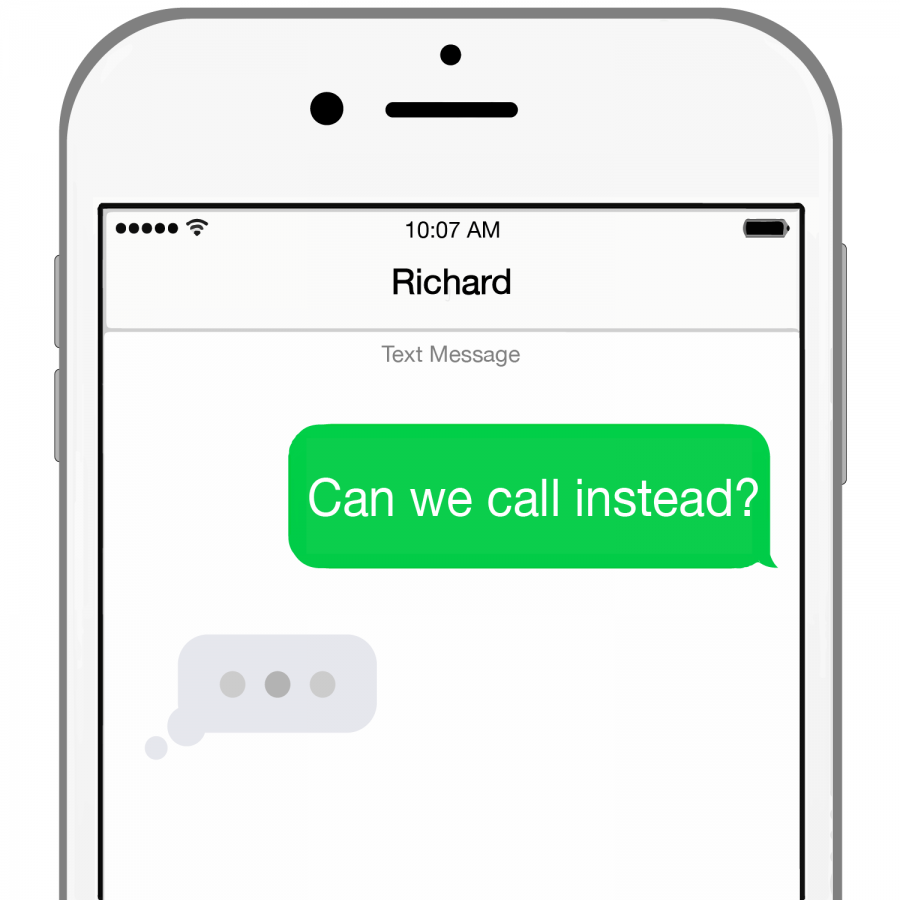Texting is not as effective as a phone call
December 6, 2017
A few Fridays ago, a group of friends and I wanted to get dinner together to celebrate the end of another stressful week of midterms. Golden Harbor at 6 p.m. was declared as the time and place, and everyone agreed they could make it. As 6 o’ clock rolled around, everyone — except one person, let’s call him Bob — was at Golden Harbor. We asked Bob’s roommate where Bob was, and he said he didn’t know since Bob didn’t respond to his text.
As a group, we weren’t sure whether we should eat without him or wait a bit longer. Ten minutes later, Bob appeared and declared that the reason he was late was he saw a friend he hadn’t seen for a while, decided to catch up with him and didn’t see the texts.
After this event, I was wondering how we could’ve avoided this problem, and I realized the answer was quite simple: a phone call. Calling Bob would have fixed the problem because Bob’s whereabouts and whether the group should start without him would have been instantly determined because Bob would have responded instantly through the phone.
Today, people don’t usually think of phone calls as a means of communication. It has been phased out in favor of text messaging. What could be more convenient than instant messaging? People forget that phones involve one more layer of depth of communication than text: the voice.
A phone call allows for faster communication than text because there’s no need to type something out. This allows for not only a more efficient means of communicating, but also an improvement in the quality of the conversation because people can incorporate emotion in their voices.
Get The Daily Illini in your inbox!
According to professor Albert Mehrabian, words only contribute to 7 percent of the message when communicating. Adding voice would add 38 percent to the quality of the message transferred, especially when transferring a message that uses emotion.
It’s a well-known statement that “sarcasm doesn’t work over text.” Sarcasm is defined as saying one thing but meaning the complete opposite. Without obvious verbal or nonverbal clues, sarcasm completely and utterly fails through text because the only piece of evidence that might lead one to believe a text is sarcastic is context. Text just doesn’t convey the same level of emotion because the difference isn’t what you say but how you say it.
In today’s electronic culture, texting is the most popular means of communication. It lets people communicate small pieces of information without having to go through the hassle of calling them. This is great when you want to know something objective like what time a concert starts. However, texting has gotten so powerful that it dominates areas where texting isn’t necessarily the best method of communication.
With the advent of apps like Tinder, many people are finding dates online and making first impressions through text instead of face-to-face. As Mehrabian said in his paper, texting only makes up for 7 percent of the determining factor of emotional communication. Attempting to communicate emotional messages through text can lead to awkward situations where texts are misinterpreted and issues arise.
Unfortunately, this problem is usually a result of both sides interpreting the message differently, so the issue isn’t the message itself, but the way through which the message is communicated. This is so common that Key and Peele made a comedy skit about this very problem a few years ago.
If you must use text messaging, a simple solution to this common issue is to clearly word your messages to avoid misinterpretation.
Texting shouldn’t be the prime means of communicating. There should be a push to increase the usage of other forms of communication, like voice or video calling.
Overall, the end goal is for people to communicate face-to-face. But when that isn’t physically possible, the order of communication in terms of quality of your conversation is video calling, then voice calling and finally texting. This way, based on the type of message, people can gauge what form of communication to use to convey their message in the best way possible.
Brian is a junior in Engineering.







